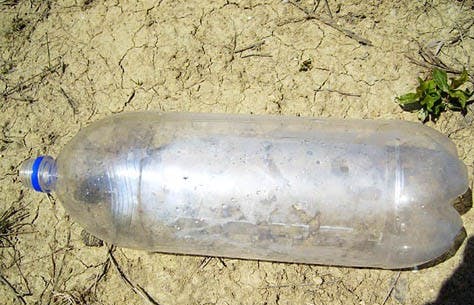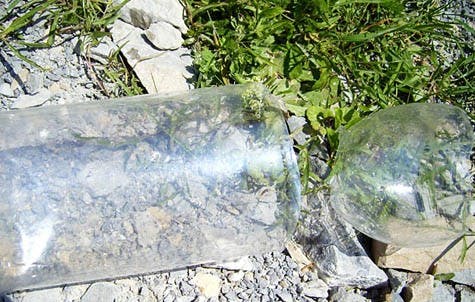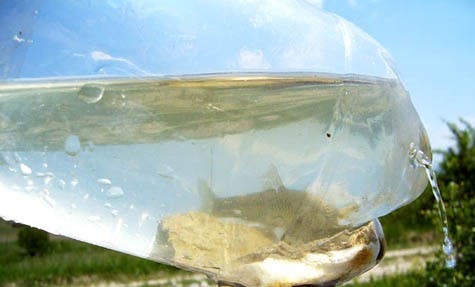Are you an avid angler looking to enhance your fishing game? One effective method to increase your chances of success is by using a minnow trap. Minnows are highly attractive bait for a wide range of fish species, making them a valuable asset in your fishing arsenal. In this comprehensive guide, we will walk you through the process of creating your own minnow trap.
From materials and tools to step-by-step instructions, we've got you covered. So, let's dive in and learn how to make a minnow trap that will elevate your fishing experience!
Materials Needed for a Minnow Trap
Before we delve into the construction process, let's gather all the necessary materials. Here's a list of items you'll need to make your own minnow trap:
Plastic bottle (2-liter soda bottle works well)
Scissors or a utility knife
Wire mesh or screen
Zip ties or strong adhesive
The nylon string or fishing line
Bait (bread crumbs, dog food, or commercial fish food)
Optional: weights or stones
Plastics have gone deep into our lives. and not only. Plastic objects (mostly bottles) can be found in the most unexpected and deserted places. In addition, it is very likely that you have a plastic bottle in you. All soft drinks and mineral water are sold in such. A plastic bottle can become an effective trap for small fish, and in the next few lines, I will show you how.
Step-by-Step Instructions on Making a Minnow Trap
Step 1: Prepare the Bottle
First, as you can imagine, you need a plastic bottle. Size is not particularly important, but it is good to be over 1 liter (1.5-3 liters is ideal). In this case, the bottle I use is 3 liters, but I have not selected it specifically. I just found it around the reservoir – we need to be closer to the real situation after all. It is good that the top of the bottle (around the neck) is more elongated, not as rounded as this one, but so it is.

To start, ensure that your plastic bottle is thoroughly cleaned and free of any residue. Remove the label and rinse it with water. Dry the bottle entirely before proceeding to the next step.
Step 2: Cut Openings in the Bottle
We cut the top of the bottle (with the neck) to the area where it already passes into its full width. In other descriptions of the trap you can see that the neck itself with the screw for the cap is left, but I recommend removing it. Thus, the opening becomes slightly wider, which increases the chance of the fish entering it, and in addition, this thickening is removed, which can make it suspicious and timid. (When cutting off the throat, my knife slipped away, and in the photos you may notice that a fairly wide opening has been obtained. This did not interfere with the effectiveness, but an opening with a diameter of about 3-4 centimeters is ideal).

Using scissors or a utility knife, carefully cut two rectangular-shaped openings on opposite sides of the bottle. These openings should be large enough for minnows to enter but not so large that they can easily escape.
Step 3: Attach the Wire Mesh
Cut a piece of wire mesh or screen that is slightly larger than the bottle's opening. Secure it tightly using zip ties or strong adhesive. This will prevent the minnows from escaping once they enter the trap.
Step 4: Create the Funnel
The resulting "funnel" turn 180 degrees and insert it inside the rest of the bottle. This results in a barrier that prevents the fish from finding their way back.

To guide the minnows into the trap, you'll need to fashion a funnel-shaped entrance. Cut a section from the bottle's neck, leaving a narrow opening at the top and a wider opening at the bottom. Attach this funnel to one of the rectangular openings you created earlier using zip ties or adhesive.
Step 5: Add Weight (Optional)

If you plan to use your minnow trap in a flowing water source, it may be necessary to add weights or stones to keep it stable. Attach these weights to the bottom of the trap using zip ties or by creating small holes for string attachment.
Step 6: Bait the Trap
It is good to put some bait in it – worms, bread, insects, something bright or shiny. In this case, I put two white stones and that turned out to be enough. However, stones can only be used when fishing in shallow water. Small fish usually do not swim much deep and stick around the shore and the surface of the water. If you notice small fish on the surface of deep water, you can put something of higher buoyancy in the bottle to keep the trap there.

Bottle Fishing Trap[/caption]
Now comes the crucial step of baiting your minnow trap. Minnows are attracted to various types of food, including bread crumbs, dog food, or commercial fish food. Place a generous amount of bait inside the trap, near the funnel entrance. This will entice the minnows to enter the trap in search of food.
Step 7: Secure the Trap
Attach a length of nylon string or fishing line to the top of the trap. This will allow you to secure it to a fixed object near the water, such as a tree branch or dock. Ensure that the trap is submerged to a sufficient depth, typically around 1-2 feet, for optimal results.

Minnow Trap: FAQs
FAQ 1: How long does it take for minnows to enter the trap?
Minnows are naturally curious and attracted to the scent of the bait. Depending on the area and the amount of fish activity, it may take anywhere from a few minutes to several hours for minnows to enter the trap. Patience is key when using a minnow trap.
FAQ 2: Can I use the minnow trap in saltwater?
While minnow traps are primarily designed for freshwater use, they can also be effective in saltwater environments. However, it's essential to choose the right type of bait that appeals to saltwater fish species.
FAQ 3: How often should I check the minnow trap?
To ensure the well-being of the trapped minnows and to avoid overcrowding, it's recommended to check the trap every 1-2 hours. This will allow you to remove any caught minnows and replace the bait if necessary.
FAQ 4: Can I release the captured minnows back into the water?
If you catch more minnows than you need for fishing, it's possible to release them back into the water. However, make sure to handle them with care and release them in a suitable environment away from predators.
FAQ 5: Are there any regulations regarding the use of minnow traps?
Regulations may vary depending on your location and local fishing guidelines. It's essential to familiarize yourself with the rules and regulations in your area before using a minnow trap. This will ensure you stay in compliance with fishing laws and contribute to sustainable fishing practices.
FAQ 6: Can I reuse the minnow trap?
Yes, you can reuse the minnow trap multiple times. After each use, make sure to clean it thoroughly to remove any bait residue or debris. This will help maintain the trap's effectiveness and ensure its longevity.
Conclusion
Learning how to make a minnow trap is a valuable skill for any angler seeking to enhance their fishing experience. By following the step-by-step instructions outlined in this guide, you'll be well-equipped to create your own effective minnow trap. Remember to choose the right bait, be patient, and check the trap regularly for successful results. Happy fishing!
